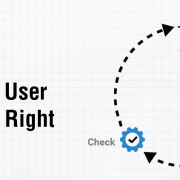We Thank Our Lucky Stars in 2020
We Thank Our Lucky Stars in 2020
In a year that was hit, broadside, by Covid-19 and that witnessed the loss of over 1,000,000 people (and counting) to the virus world-wide, do we really have anything to be thankful for? I would argue that although the end of this challenging situation is not yet in sight and massive human suffering continues, we do have reason to be thankful. Let me explain why.
Resolve of Global Community to Work Together on Solutions
On one level, we heard our share of polarizing words, accusations and friction, all of which seems to go hand in hand with an international crisis of this scale. But along with all of this political posturing, particularly from certain parts of the globe, we also experienced real leadership. Effective and life-saving efforts came from unexpected as well as expected places. Real leadership was focused, uncompromising and unequivocally based on and driven by data, statistics and fact. Local leaders advocated for commitment, service and personal sacrifice. Under the best of circumstances, a quick response resulted in a swift decline in case numbers. New York City, for example, was the world’s Covid-19 epicenter for weeks in early 2020 but managed to bring deaths/day down from a peak of 952 at the beginning of May down to 2/day by the end of September. This drastic shift in the city’s trajectory was nothing short of remarkable.
At clinics and hospitals around the world, hundreds of thousands of medical practitioners rallied to treat those afflicted with Covid-19, not knowing if they were to be the next victims. Most had families and dependents at home. According to Amnesty International, over the last nine months over 10,000 health workers lost their lives taking care of patients with Covid-19. These selfless individuals remain and continue to be an inspiration to us all.
Numerous teams across the globe launched accelerated vaccine research initiatives. Political boundaries become secondary as scientists and medical practitioners shared information and discoveries relative to potential treatments and cures. Many countries and professionals rose to the occasion to collaborate and avoid reverting to a vaccine “arms race”.
A Dedicated and Committed Team that Continues to Rally and Push Forward
Closer to home, the work ethic and drive of the individuals that make up the team at Highlands continues to impress me. When it became apparent that the world was on the brink of a crisis, yet Noida was not yet shutting down, everyone at Highlands shifted gears in the blink of an eye. Within a matter of days, workstations and necessary equipment were moved from corporate headquarters to home offices. Giving new meaning to agile teamwork, Highlands employees are safe at home and working remotely.
Employees Game to Learn and Grow
The key word is humility. We approach everything we do here at Highlands with some level of humbleness. Here at Highlands we have recruited the best in class and the best in profession, but this doesn’t mean we think we know it all. No matter status, education, or years of experience, we know we are all still students of life and work. Crises are, if nothing else, an opportunity for growth. We strive to learn from our mistakes and move forward, capitalizing on any insights we’ve gained through our mistakes to make this living, breathing system—which is Highlands—maintain its edge.
Not only is humility necessary to move a team forward but change and evolution are necessary as well. Each day at Highlands is different because the needs of our clients—the engineers and the global communities they serve and the problems they need help with—are different, from one day to the next. At the core, we are dealing with natural systems and natural systems are fundamentally dynamic in character. Engineers need to have tools to grapple with change, unpredictability and flux, and we want to continue to make the tools that facilitate reliable analysis.
Customers that Push Us to Do More
Could you design a car without the driver in mind? Could a playground be fun and surprising without plugging into the imagination of a kid? Highlands customers are not on the payroll, but in view of how they drive and shape our products, they very well could be. They are as much a part of the development team as any of our programmers. The practical knowledge and insights they offer into how to make our engineering software functional and relevant for today’s engineering problems are invaluable. We treasure these customers for their drive, interest and contributions towards making our solutions for the world’s engineers the best they can possibly be.
Parting Thoughts on the Year 2020
This has been anything but a typical year, but even a year of challenges can offer surprising opportunities. Here’s to putting a positive spin on otherwise difficult circumstances. Here’s to counting our blessings and giving thanks when it’s hard to see what is still good in the spaces and in the lives of the people around us. Here’s to looking ahead with hope and optimism.







